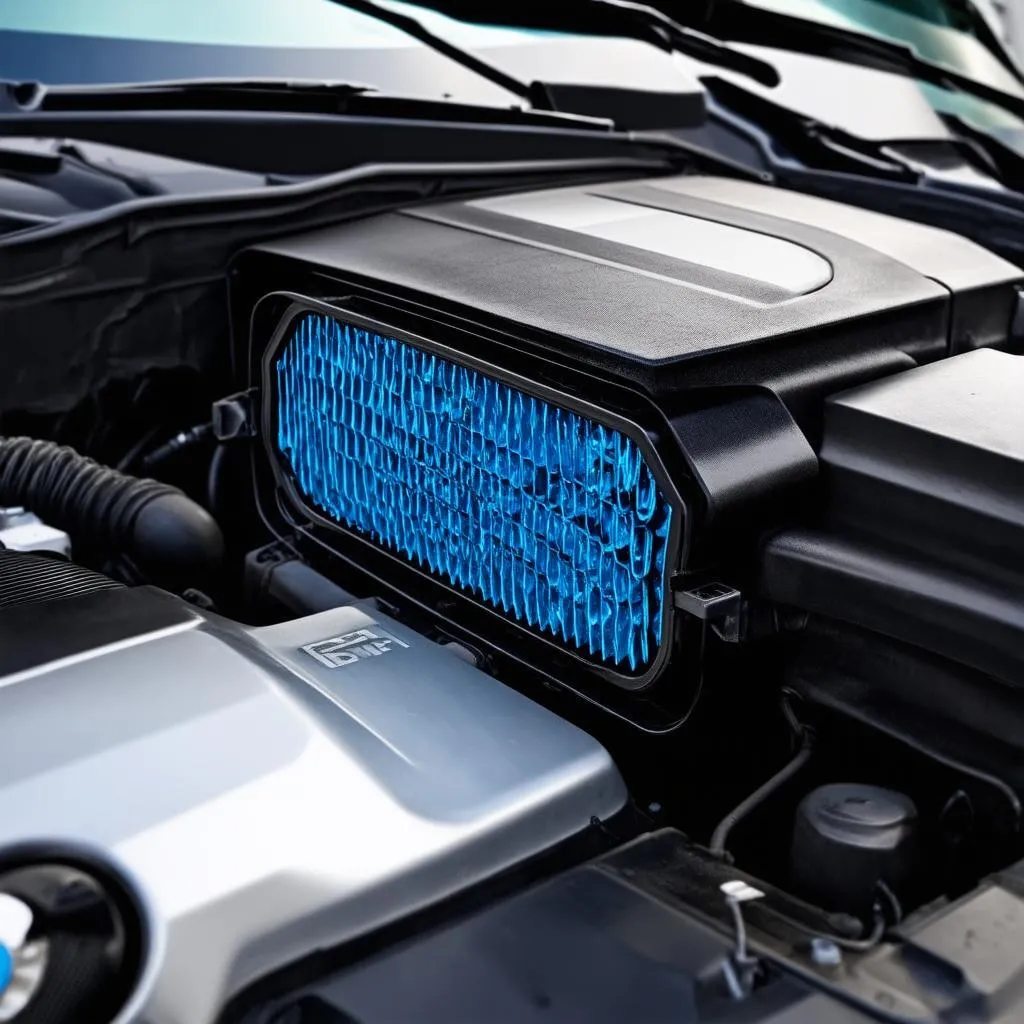BMW DPF: Everything You Need to Know About Diesel Particulate Filters
Have you ever wondered what that mysterious “DPF” light on your BMW dashboard means? You’re not alone! This little light can cause a lot of anxiety, especially if you’re not sure what it signifies. In this comprehensive guide, we’ll delve into the world of Bmw Dpfs, demystifying everything from their purpose to how to handle pesky DPF issues.
What is a BMW DPF?
A DPF, or Diesel Particulate Filter, is a crucial component of your BMW’s exhaust system. It acts like a net, trapping soot and other harmful particulate matter emitted by the diesel engine before they can be released into the atmosphere. This filtering process helps reduce air pollution, contributing to a cleaner environment.
Why is the DPF Important?
Imagine this: You’re driving your BMW along a scenic highway, enjoying the fresh air and beautiful views. Suddenly, a dense cloud of black smoke billows from your car’s exhaust, leaving a trail of pollution in its wake. That’s what can happen without a properly functioning DPF.
This filter is a critical component in meeting stringent emissions regulations and ensuring your BMW runs efficiently and cleanly. It’s like a guardian angel for the environment, protecting us from harmful pollutants.
The BMW DPF Regeneration Process
Now, let’s talk about the “regeneration” process, which is essential for keeping your DPF healthy and functioning. Imagine your DPF as a sponge. It gradually gets clogged with soot and ash as you drive. This is where the regeneration process comes in.
The regeneration process is like giving your DPF a good cleaning. This happens automatically when your car’s computer senses the DPF is getting full. The system injects extra fuel, raising the exhaust temperature, which burns off the trapped soot and ash, leaving your DPF clean and ready to go.
Common BMW DPF Problems & Solutions
Even with the auto-regeneration process, you may encounter DPF issues. These can range from a simple “DPF light” on your dash to more serious problems.
Common BMW DPF Issues:
- DPF Light: This indicates the DPF is full and needs regeneration.
- Reduced Engine Power: If the DPF is excessively clogged, it can restrict exhaust flow, impacting your engine’s performance.
- Increased Fuel Consumption: A clogged DPF can lead to higher fuel consumption as the engine struggles to work efficiently.
Solutions:
- Manual Regeneration: If the auto-regeneration process fails, you can often initiate a manual regeneration using your vehicle’s onboard computer.
- Cleaning: If the DPF is severely clogged, cleaning with a specialized solution may be necessary.
- Replacement: In some cases, if the DPF is damaged or beyond repair, it might need to be replaced.
How to Prevent DPF Problems
Just like taking care of your health, preventative measures can go a long way with your DPF.
Tips for Maintaining a Healthy DPF:
- Drive Regularly: Frequent, longer drives are ideal for ensuring proper regeneration.
- Avoid Short Trips: Short trips don’t allow the DPF to reach the temperature necessary for regeneration.
- Use High-Quality Diesel: Poor-quality diesel can contribute to faster DPF clogging.
- Regular Maintenance: Ensure your BMW receives regular servicing, including DPF checks.
Where to Go for Help
If you’re experiencing DPF issues, don’t panic! Many resources are available to help you. Consult your BMW dealer or a reputable automotive repair shop specializing in European vehicles.
FAQs about BMW DPFs
Q: How long does a DPF last?
A: With proper care, a DPF can last the lifetime of your car. However, factors like driving habits and the quality of diesel fuel can affect its lifespan.
Q: What is a “DPF delete” and is it legal?
A: A “DPF delete” is a modification that removes or disables the DPF. This is typically illegal in most jurisdictions as it violates emissions regulations.
Q: Can I add fuel additives to help with DPF regeneration?
A: While some fuel additives claim to improve DPF performance, it’s best to consult your owner’s manual or a mechanic before using them.
Q: How can I tell if my DPF is clogged?
A: The most obvious sign is the DPF light on your dashboard. Other symptoms may include reduced engine power, increased fuel consumption, and black smoke from the exhaust.
Explore More!
Want to learn more about BMW diagnostics and repairs? Check out our other articles:
Get Expert Help!
At CarDiagXpert, we’re committed to helping you keep your BMW running smoothly. Our team of expert technicians is available 24/7 to provide support. Contact us today for assistance with any of your BMW diagnostics and repair needs!
 BMW DPF Repair
BMW DPF Repair
 BMW DPF Regeneration
BMW DPF Regeneration
Contact us: Whatsapp: +84767531508
Remember: Keeping your DPF clean is vital for your BMW’s health and the environment. By understanding the DPF and following the tips in this guide, you can ensure your BMW remains a joy to drive for years to come.
